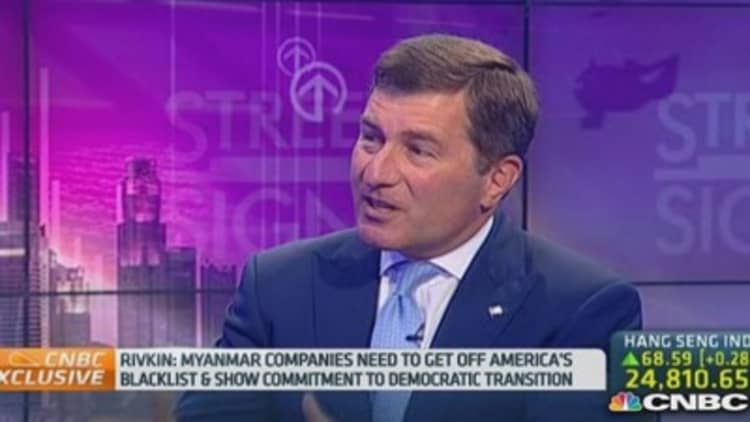ASEAN states aim to form a shared market next year, but experts say corporate confidence in the bloc remains shaky.
In 2008, the 10 Southeast Asian nations that make up ASEAN pledged to achieve a single market and production base with free movement of goods, services, investment, capital and skilled labor by 2015. The project - dubbed ASEAN Economic Community (AEC) - also focuses on the region's full integration into the global economy.
"ASEAN does not have the political will to achieve this level of integration anytime soon. [It's] still struggling to represent itself internationally and integration of the bloc economically hasn't progressed very well since its formation. I'm cautious on the region," Dariusz Kowalczyk, senior economist at Credit Agricole told CNBC.
Read MoreSE Asia builds home-grown defense industry
Global companies are skeptical on the group's target. Asked whether ASEAN governments will actively push integration forward, sixty percent of companies in a Boston Consulting Group (BCG) survey published Wednesday said "maybe," and 10 percent said "no."

Meanwhile, 52 percent of American enterprises expected the goals will not be reached until 2020 or later, according to an American Chamber of Commerce and U.S. Chamber of Commerce survey published in August.
Why so pessimistic?
ASEAN boasts a combined gross-domestic product (GDP) of over $2 trillion, abundant natural resources and a large youth population, but growth has been hindered by poor governance, corruption, and protectionist policies since its formation in 1967.
Indonesia, the member with the largest economy, is especially guilty of the latter, having enforced several measures that limit foreign investment, including a ban of raw mineral ore in January and a trade law in February that allows government control of exports and imports to protect local industries.
Read MoreFuel inflation a risky juggle for this Asia heavyweight
"Member countries have yet to make significant headway in areas such as eliminating non-tariff barriers, reducing cross-border investment obstacles and improving labor mobility. Until further clarity on such pertinent issues materializes, ASEAN companies may be tempted to hold off on large scale intra-regional investments despite the secular story of increasing trade integration," said Moody's Investor Service in a note this week.
Deeper financial integration between members is needed to boost corporate expansion, but is hindered by differences in regulations and corporate governance, the ratings agency warned.
Divergent levels of economic development also weigh on the group's track record, said Song Sen Wun, regional economist at CIMB.
For example, GDP per capita in poverty-stricken Myanmar stands around $861 per year, versus $52,000 in wealthy Singapore, according to data from KPMG.

The ease of doing business in the region also varies. Singapore ranks first globally for ease of doing business and Malaysia ranks 6th, according to the World Bank. By contrast, Lao ranks 159th and Myanmar ranks 182nd.
Read MoreWhy Asia trade maybe resilient to China spats
Sole bright spot?
"While investors may not care about the AEC, the reality on the ground is that private sector businesses are prospering and exploring the region, as seen by large conglomerates from Malaysia, Thailand and Indonesia. In the long-term, income levels are rising and that is leading to greater disposable spending," CIMB's Wun added.
Intra-ASEAN foreign direct investment grew from $15,228 million in 2011 to over $21 million in 2013, official data shows.
But BCG warns that the private-sector must not depend on government action to grow their business.
Read MoreWhy we need to boost US-Asia trade
"Southeast Asian integration has gained momentum of its own. The race for competitive advantage across the region is well under way. If those governments implement the remaining measures needed to achieve the free flow of goods, capital, and labor, that race will accelerate," the report said.
"While we hope that governments will not become more protectionists, we also do not expect many additional major breakthroughs," it said. "Governments have already created tremendous opportunities. It is up to the private sector to seize them."

